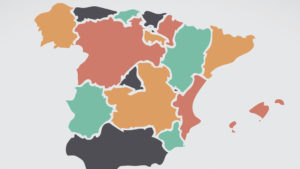The role of governments is not limited to establishing crime maps or applying algorithms that predict the crimes that will happen in the future, but involves a more complex task, which is to understand what motivates them.. It is at this point where data and statistics play a fundamental role when drawing up a state of affairs. Identify the characteristics of those who commit crimes, in such a way that they allow the elaboration of policies specifically aimed at them.
Being able to map the most problematic areas with their specific characteristics not only allows for prevention work, but also to know what are the particularities of the situations in which crimes are committed and to design policies that prevent the transgression and even the intention of committing it.
The technology applied to prevent crimes has developed a lot, reaching the point of commercializing a famous software of Predpol que aseguran sus creadores, ayuda a predecir dónde se producirán los futuros crímenes.
Knowing the characteristics of the offenders: ages, socio-economic conditions, cultural makeup, family problems, geographical areas where they live, etc., it is possible to study the profiles that help us understand not only at what age they begin to commit crimes, but what characteristics they have in common and what are the shortcomings or challenges that lead them to commit crimes. With all this information it is possible to know which group of the population to target and up to what age there is time to arrive before they commit the first crime.
Obtaining data allows us to mitigate the consequences and at the same time attack the causes of problems.
Which leads to working in two directions, one public and one reserved. The public one refers to crime maps, hot zones, details of the events that occurred and other data that contribute to crime mitigation.
The other sphere is reserved, it has to do with the social study of the data where its publication could even make its treatment difficult since it can lead to social responses of stigmatization, discrimination and segregation that make it even more difficult to resolve the situation.
It is about adding another perspective to security and not being limited to a purely infrastructure issue, responding only with more mobiles, security cameras with facial recognition, algorithms, weapons and more. All this is equivalent to thinking that a flood is solved by buying boats and preparing places of accommodation for the victims. With that the effects of the flood are mitigated and it is something necessary but We are obliged to confront the causes to avoid a greater number of victims and perpetrators.
That is why public management based on certain data allows the generation of proactive policies that anticipate the facts and show the results of these actions in statistics, applying fewer resources to achieve a greater number of results.






